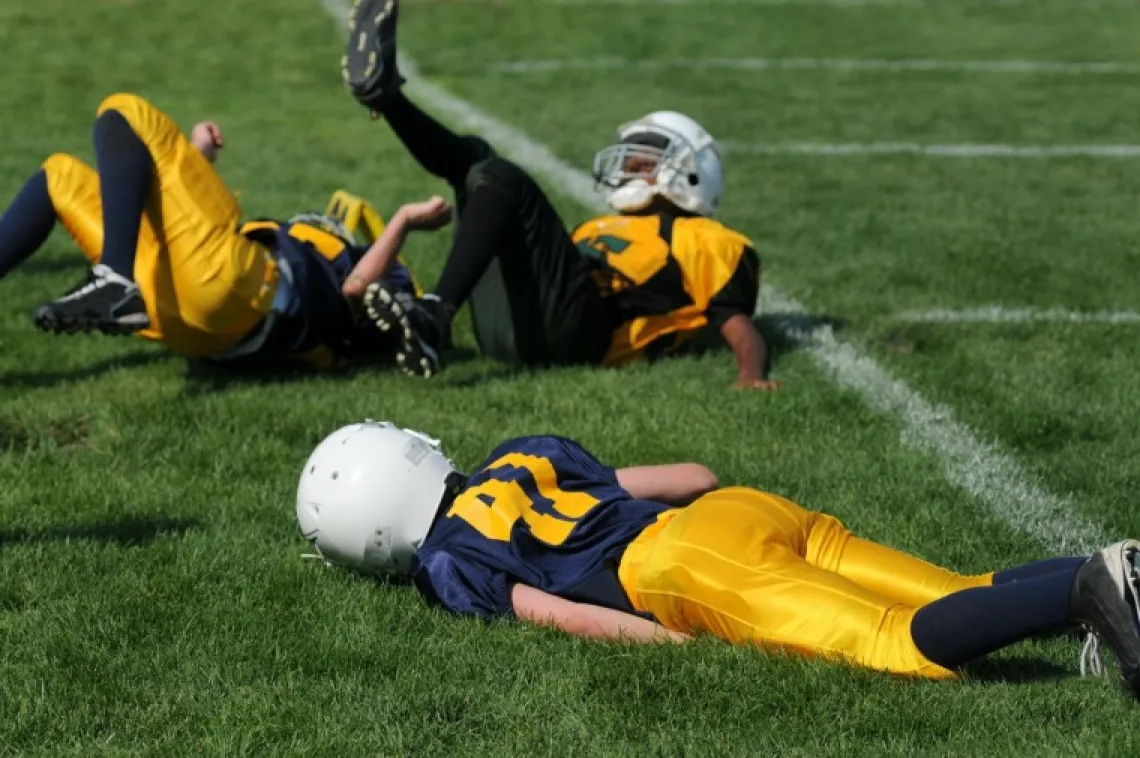BIO5 members make strides against traumatic brain injury through research and clinical practice
We’re highlighting our researchers’ efforts against this major cause of death and disability in the United States during National Traumatic Brain Injury Month.

f you’ve ever had a concussion, fallen and hit your head, or been in a car accident, you’ve likely experienced a traumatic brain injury (TBI) – a disruption in normal brain function. TBIs account for more than 2.8 million visits to the emergency room, hospitalizations and deaths each year.
These injuries dismantle circuits in the brain, leading to short- or sometimes long-term cognitive disability. Repair and regeneration processes often fail after a TBI, leaving the brain improperly wired.
Elizabeth Hutchinson, BIO5 Institute member and assistant professor of biomedical engineering, is using advanced imaging approaches to develop and understand novel markers of these brain changes.
“TBI can be very challenging to diagnose and research because the brain’s response to trauma can involve so many different types of pathology, anything from large hemorrhages to inflammation to the reorganization of brain connections. It’s difficult to determine these outcomes in the living brain,” Hutchinson said.
To address these gaps in knowledge, Hutchinson uses advanced imaging approaches, particularly magnetic resonance imaging (MRI), to develop and understand novel markers of these brain changes. She aims to use these markers to improve the detection of specific brain changes following TBI and to link them with meaningful recovery outcomes.
Fellow biomedical engineer and BIO5 member Kaveh Laksari utilizes injury biomechanics to understand the underlying processes of TBI and modeling to minimize TBI in contact sports. The assistant professor of aerospace and mechanical engineering hopes his research will help to prevent and diagnose this condition.
Physical and psychological symptoms can vary depending on TBI intensity. While some may experience headaches, difficulty concentrating and light sensitivity, others may experience complete loss of consciousness and mild cognitive impairment – a measurable decline in memory and thinking skills.
Ying-hui Chou, director of the UAriziona Brain Imaging and Transcranial Magnetic Stimulation (TMS) Laboratory and assistant professor of cognition and neural systems, studies this consequence. With a $3.4M grant from the National Institutes of Health, the BIO5 member is investigating how to prevent memory loss and enhance brain function in patients with mild cognitive impairment (MCI).
She and colleagues were also awarded an RII Faculty Seed Grant to study cholinergic function, which plays a significant role in learning and memory, using the novel TMS technique in patients with various neurological conditions including MCI. Chou also plans to collect data on self-reported TBI history and investigate a potential association with increased risk for and earlier onset of MCI.
While mild TBI may not require specific treatment aside from rest, more severe cases may require surgery to remove blood clots or pools, repair skull fractures, or relieve pressure between the brain and skull.
Several BIO5 members are addressing various aspects of patient care and quality of life after these more invasive procedures: Kurt Denninghoff, professor of emergency medicine and optical sciences; Jonathan Lifshitz, director of the Translational Neurotrauma Research Program at the College of Medicine – Phoenix; and Vignesh Subbian, assistant professor of biomedical, systems and industrial engineering.
And, since the most common problem associated with a concussion is headache, associate head of pharmacology Frank Porreca is working to identify the cause of post-concussion headaches and develop a possible therapeutic.
Together, our BIO5 researchers are making momentous strides towards improving patient quality of life as well as preventing disease altogether.
